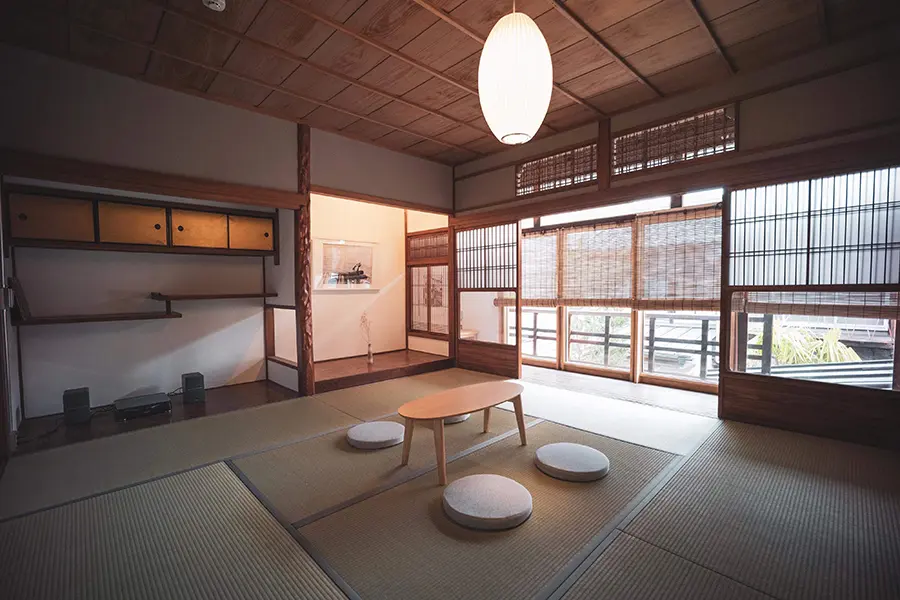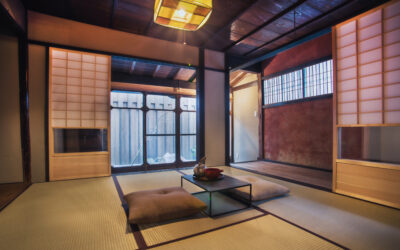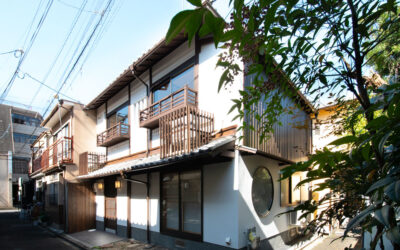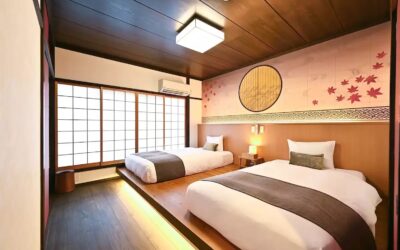Traditional Japanese homes are a sight to behold. With their minimalist aesthetic, natural material, and connection to nature, they’re a unique and beautiful expression of Japanese culture. However, there is more to these homes than just their looks. Living in a traditional Japanese home can be an incredibly rewarding experience for foreigners, offering a chance to immerse oneself in Japanese culture and enjoy the health benefits of a simple balanced lifestyle.
1. Appealing characteristics of Japanese Traditional homes

The traditional design focuses on simplicity, clean lines and open spaces, creating calming and peaceful environment. The use of natural materials such as wood, paper, and bamboo also adds to the appeal, as it creates a warm and inviting atmosphere. The homes are designed to connect with nature, with features such as shoji screens that allow for natural light and fresh air to flow through the space. The overall effect is a harmonious and balanced living environment that is both calming and invigorating, making Japanese traditional homes an attractive option for those seeking a unique and enriching living experience.
2. Immerse yourself into the Japanese culture through your home
Living in a traditional Japanese home offers an excellent opportunity for foreigners to embrace Japanese culture. The design, architecture, and decor of a traditional Japanese home reflect the values and traditions of Japanese society, and by living in such a space, foreigners can gain a deeper understanding of these cultural nuances. For example, the use of tatami mats, shoji screens, and sliding doors is a fundamental part of traditional Japanese architecture, and understanding how these features are used can offer insights into Japanese culture. Additionally, many Japanese homes have a tokonoma, a special alcove used for displaying art and objects, which is a unique aspect of Japanese interior design. By living in a traditional Japanese home, foreigners can appreciate and learn about these cultural traditions, and integrate them into their own lives.
3. Opportunity to Learn the Japanese language through your stay
When immersing themselves in a Japanese-speaking environment, foreigners can practice their language skills and gain a deeper understanding of Japanese culture. Living in a traditional Japanese home can also expose foreigners to common Japanese phrases and expressions used in everyday life, allowing them to learn and use the language more effectively. Additionally, many traditional homes have elements of Japanese culture and history displayed throughout, including art, calligraphy, and literature, which can provide opportunities for foreigners to practice reading and comprehension skills. Overall, living in a traditional Japanese home can offer a rich language-learning experience that can help foreigners to develop fluency and deepen their appreciation of Japanese culture.
4. Sustainability in Japanese Traditional homes

Traditional Japanese homes are designed with sustainability in mind, with a focus on using locally-sourced and renewable materials. Wood, for example, is a common material used in Japanese homes, and it is often sourced from nearby forests, ensuring that the carbon footprint of transportation is minimized. Additionally, traditional Japanese homes are designed to take advantage of natural ventilation and lighting, with features such as large windows and open-air courtyards. Thick walls and sliding doors help to regulate temperature, reducing the need for artificial heating and cooling. Furthermore, the use of natural materials like straw, clay, and paper for insulation helps to further reduce energy consumption. The result is a sustainable living space that is energy-efficient and environmentally-friendly.
To conclude, Japanese traditional homes offer a unique living experience that is both aesthetically appealing and sustainable. The minimalist design, use of natural materials, and connection to nature create a calming and peaceful environment that is difficult to find elsewhere. Immersing oneself in a traditional Japanese home also provides a valuable opportunity to learn about Japanese culture and language, as well as to practice sustainable living. The focus on using locally-sourced and renewable materials, natural ventilation and lighting, and insulation with natural materials helps to reduce energy consumption and minimize the carbon footprint of the home. Overall, living in a traditional Japanese home can provide foreigners with a one-of-a-kind living experience that offers benefits for both personal growth and the environment.





